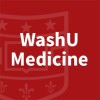
Body Fat as Determinant of Female Gonadal Dysfunction
Polycystic Ovary SyndromeHypothalamic AmenorrheaReproduction requires from women enough energy depots to warrant an adequate nutritional supply to the fetus. Hence, adipose tissue is able to communicate with female hypothalamic-pituitary-ovary axis. The hypothesis of the project is that abnormalities in the quantity (absolute and relative to lean body mass), distribution and/or function of adipose tissue are associated with functional forms of female gonadal dysfunction in predisposed women, in a spectrum of anomalies that go from hypothalamic amenorrhea to the polycystic ovary syndrome (PCOS). To challenge this hypothesis, the investigators will study 5 groups of 10 women each: women with exercise-associated hypothalamic amenorrhea, women without ovulatory dysfunction that exercise equally, non-hyperandrogenic patients with PCOS, hyperandrogenic patients with PCOS, and healthy control women comparable to those with PCOS. The aims of the study will be: Primary objective: To identify novel signalling factors originating from adipose tissue and muscle using targeted and nontargeted evaluation of the proteome and of gene expression of superficial subcutaneous fat, deep subcutaneous fat (which mimics visceral adipose tissue) and skeletal muscle. Secondary objectives: To study the serum adipokine profile - including those identified by the primary objective - and circulating gut hormones during fasting and after a glucose load in the 5 groups of women, and their associations with sexual hormones and body fat distribution. To study body composition and body fat distribution in these women and their relationships with: 2.1, Sex steroid profiles. 2.2. Classic cardiovascular risk factors: carbohydrate metabolism, lipid profiles and blood pressure. 2.3 Markers of low-grade chronic inflammation. 2.4. Oxidative stress markers. 2.5. Cardiovascular autonomic function. 2.6. Surrogate markers of subclinical atherosclerosis. 2.7. Circulating concentrations of endocrine disruptors. 2.8. Oral and gut microbiome. The results will provide a better understanding of the mechanisms linking body energy depots with the female reproductive axis and, hopefully, the identification of potential biomarkers for the diagnosis and treatment of the disorders studied here.

Screening With Whole Body MRI For Detection Of Primary Tumors In Children And Adults With Li-Fraumeni...
Li-Fraumeni SyndromeThis study is evaluating Whole Body MRI as a possible screening tool to diagnose cancer for people with LFS and other inherited cancer predisposition syndromes.

A Study of BLEX 404 Oral Liquid in Patients With International Prognostic Scoring System (IPSS)...
Myelodysplastic Syndrome (MDS)This is a clinical trial to determine the safety, recommended dose level (RDL), and infection control of BLEX 404 Oral Liquid in combination with azacitidine in patients with International Prognostic Scoring System (IPSS) intermediate-1 (int-1), intermediate-2 (int-2) or high-risk myelodysplastic syndrome (MDS) and Chronic Myelomonocytic Leukemia (CMML).

Mesenchymal Stem Cells for The Treatment of Acute Respiratory Distress Syndrome (ARDS)
Acute Respiratory Distress SyndromeThe clinical study with UMC119-06 is designed to investigate the safety in patients with moderate acute respiratory distress syndrome ("ARDS"). This will be a dose escalation, open-label, single-center study in adult with ARDS. UMC119-06 is ex vivo cultured human umbilical cord derived mensenchymal stem cells (hUC-MSCs) product which is intended for treatment of ARDS.

Implementation of the Families Accelerating Cascade Testing Toolkit (FACTT) for Hereditary Breast...
Hereditary Breast and Ovarian CancerLynch SyndromeThe purpose of this research study is to learn how cancer care providers can help their patients communicate the need for genetic testing in families with inherited cancer syndromes.

Faecal Microbiota Characterization in Lynch Syndrome (LS) Patients With or Without Colorectal Neoplasia...
Lynch SyndromeColorectal cancer (CRC) is the second cause of cancer-related death in western countries. CRC prevention and screening are major public health issues. Better knowledge of colorectal carcinogenesis could lead to better prevention. Gut microbiota (GM) is a complex community of bacteria, fungi, protozoa, viruses and bacteriophages which live in a symbiotic and epigenetic relationship with the host. GM can promote either digestive health or CRC through inflammatory and proliferative effects. Lynch syndrome (LS) is the most common familial CRC syndrome with a lifetime CRC risk of 52% in women and 69% in men. The risk of CRC depends upon type of altered mismatch-repair gene and environmental factors (diet, exercise, obesity, tobacco and alcohol intake, etc.). Regular surveillance including annual or biannual colonoscopy is recommended in LS patients. Chemoprevention has the potential to represent a cost-effective intervention in these high-risk patients and could allow a delay in colonoscopy surveillance. Regular low dose aspirin use is associated with a 20 to 30% reduction in the risk of sporadic colonic adenomas and CRC. The real benefit of aspirin is still to be consolidated. AAS-Lynch trial is an ongoing prospective multicenter (n=37), double-blind, placebo-controlled, randomized clinical trial, designed to investigate whether daily aspirin, at a dose of 100 or 300 mg compared with placebo, would decrease the occurrence or recurrence of colorectal adenomas in LS patients. The primary endpoint is the number of patients with at least one adenoma detected by chromo-endoscopy 48 months after initial colon clearance. At randomization and at the end of study, stool collection, blood collection, quality of life questionnaire, validated food frequency questionnaire (SU-VI-MAX2) and physical activity questionnaire are performed. The ongoing AAS-Lynch study allow accessing to a unique fecal collection in very well characterized LS patients including a comprehensive dietary evaluation at high risk for colorectal neoplasia and planned colonoscopy surveillance during a 48 months follow-up, exposed or not exposed to chronic low dose aspirin. The expertise of the scientific consortium with state of the art microbiota analysis, the comprehensive collection of data and the prospective design of the study will allow the evaluation of the true role of gut microbiota in CRC carcinogenesis.

Intradiscal and Intra-articular Injection of Autologous Platelet-Rich-Plasma (PRP) in Patients With...
Degenerative Disc DiseaseFacet Joint SyndromeAutologous Platelet-Rich-Plasma (PRP) represents a regenerative therapy that has gained remarkable ground in the field of orthopaedics in recent years. PRP has been implemented for a plethora of musculoskeletal ailments, being associated with minor complications and noteworthy efficacy (Akeda et al., 2019). PRP has been depicted to contain a variety of growth factors crucial for regulation of cell proliferation and migration as well as extracellular matrix synthesis (Cheng et al., 2019). Furthermore, therapeutic effect of PRP administration is considered to be additionally exerted via its anti-inflammatory and immunoregulative properties, as it has been delineated to induce regional decrease of pro-inflammatory mediators at the injection site (Hirase et al., 2020). Lumbar Degenerative Disc Disease (DDD) and Facet Joint Syndrome (FJS) constitute chronic degenerative conditions of lumbar spine that have been associated with substantial morbidity and disability in recent years. Besides the noted progress in comprehension of these conditions' pathogenesis, available therapeutic modalities remain extremely limited and controversial, being not capable of altering the natural progress of underlying disease (Wu et al., 2016; Wu et al., 2017; Hirase et al., 2020). Autologous PRR has been recommended as a beneficial alternative instead of conventional treatment strategies for interventional management of lumbar DDD and FJS (Aufiero et al., 2015; Navani and Hames, 2015; Kirchner and Anitua, 2016; Levi et al., 2016; Tuakli-Wosornu et al., 2016; Wu et al., 2016; Akeda et al., 2017; Lutz GE, 2017; Wu et al., 2017; Cheng et al., 2019). Results of these studies indicated that intra-discal and intra-articular injection of PRP for DDD and FJS respectively is characterized by safety and satisfactory efficacy in reducing intensity of clinical manifestations, exerting also potentially regenerative effects. However, quality of available evidence is remarkably low, since in the overwhelming majority of these studies was a limited number of patients evaluated. Furthermore, determined follow-up intervals were not extended and, most importantly, patients were not majorly with rigorous clinical and radiologic criteria selected. Aim of this study is to investigate the precise effects of intradiscal and intra-articular injection of PRP in patients with early-stage lumbar DDD and FJS, as determined by particular radiologic classifications. The prospective design, the defined greater number of recruited individuals in pilot analysis as well as the comparatively greater follow-up underline the originality of our protocol.

The Use of Exosomes for the Treatment of Acute Respiratory Distress Syndrome or Novel Coronavirus...
Covid19Novel Coronavirus Pneumonia1 moreNovel coronavirus pneumonia (NCP) and acute respiratory distress syndrome (ARDS) are both associated with the prevailing upper respiratory tract infections caused by the RNA-containing SARS-CoV2 virus of the genius Betacoronavirus of the Coronaviridae family. As both the viral infiltration and infection progress, the host immune system response can be one of a rapidly developing fatal cytokine storm. In the ARDS or NCP ensuing progression, the patient often succumbs to the effects of the hyper pro-inflammatory response, hence contributing to the associated increased mortality as a result of the cytokine storm and associated pathogenesis.

Turner And Klinefelter Treatment Target Study
Klinefelter SyndromeTurner SyndromeRationale: Health related Quality of life (HRQoL) is impaired in patients with Turner and Klinefelter syndrome (TS and KS). It is unknown what the optimal endocrine treatment target values are that maximize HRQoL in patients with these syndromes. Therefore the relation between HRQoL and biochemical parameters will be studied in large cohorts of patients with TS and KS. This information will give essential insight that will help to improve endocrine treatment and HRQoL in these patients. Research objectives: To explore the relationship between biochemical parameters and HRQoL in patients with TS and KS. Hypothesis: Biochemical parameters are related to HRQoL in patients with TS and KS. Study design: Cross-sectional, observational, multicentre study Study population: Patients with KS or TS, 18 years or older Methods and procedures: To measure fatigue the Checklist Individual Strength (CIS-20) will be used, for QoL the 5-level EQ-5D (EQ-5D-L5) will be used and for stress the Perceived Stress Scale (PSS) and hair cortisol levels. For patients with KS the anxiety scale from the Liebowitz social anxiety scale (LSAS) will be used to measure social anxiety. To measure the long-term exposure to testosterone in KS patients, testosterone concentrations in hair will be measured. For patients with KS, all questions from the questionnaires will be discussed orally during a visit to the outpatients clinic. One extra tube of blood and a strand of hair will be collected during routine blood withdrawal. All other variables are already part of the standard patient care and are available in patient records. For patients with TS all information including the questionnaires and laboratory values is already available and will be collected from clinical records. Main study parameters/endpoints: The relationship between different hormonal parameters and HRQoL as measured by questionnaires. The main hormonal parameter that will be investigated in KS is testosterone in hair. For patients with Turner syndrome, free thyroxine (FT4), thyroid stimulating hormone (TSH) and liver enzymes, which have already been collected, will be investigated. The relationships between the EQ-5D-L5 score and testosterone in hair (in patients with KS) and thyroid hormone status (in patients with TS) are the primary outcomes.

Effects of Lactobacillus Plantarum PS128 in Patients With Tourette's Syndrome
Tourette's SyndromeTo evaluate whether supplementing with PS128 can improve the symptoms and quality of life related to Tourette's disease in children.
